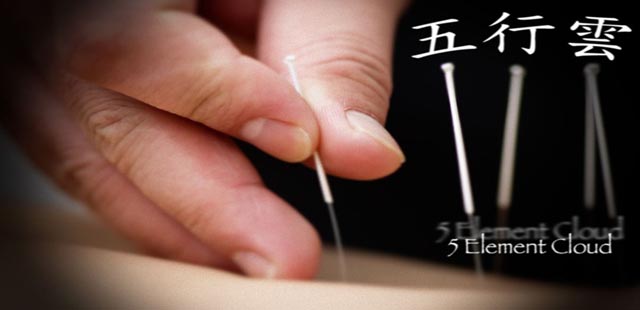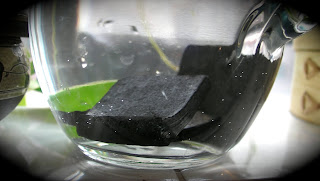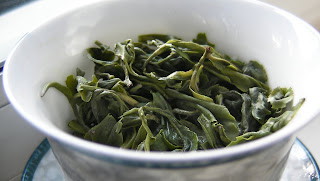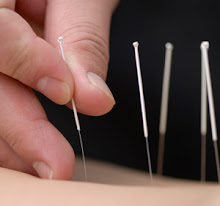Pic taken from Ebay. It's too dark to take my own
"This is a small family production made by Yi people in Mengla. Early spring 2007 material from wild arbor collected at around 1700 meters migh. The mix of large leaves and early spring buds makes this cake very balanced with notes of campher throughout the infusions. A very nice cake."
I bought a sample of this cake for a couple of reasons, the main one being that I liked the simplicity of the wrapper, I also have had good experiences with this seller. There is something about the wrapper that is appealing, the producer hasn't tried to 'tart' the tea up by adorning it with a pretty coat.
Usual parameters : yixing pot with bamboo charcoal filtered tap water.
The aroma from the freshly brewed pot is about right for a 2007 pu erh, it's somewhere half and half between it's young character and something that is starting to mature, a teenage tea. The soup is a pleasant yellow and amber, no signs of any attempts to pre age the tea. It also pours really well from my pot with an even flow, the small spout isn't blocked by any leaf fragments. Further examination shows that the spent leaves are largely intact, whole and of good size. The stalks are particularly thick and robust. Small production wild arbor? perhaps so.
In summary, there is much to like about this tea for what it is. The romance of a small run with sturdy leaf is alluring even though the potency of the soup is a little lacklustre.
Anyway, happy new year tea drinkers! May 2010 be a good year for drinking!
"This is a small family production made by Yi people in Mengla. Early spring 2007 material from wild arbor collected at around 1700 meters migh. The mix of large leaves and early spring buds makes this cake very balanced with notes of campher throughout the infusions. A very nice cake."
I bought a sample of this cake for a couple of reasons, the main one being that I liked the simplicity of the wrapper, I also have had good experiences with this seller. There is something about the wrapper that is appealing, the producer hasn't tried to 'tart' the tea up by adorning it with a pretty coat.
Usual parameters : yixing pot with bamboo charcoal filtered tap water.
The aroma from the freshly brewed pot is about right for a 2007 pu erh, it's somewhere half and half between it's young character and something that is starting to mature, a teenage tea. The soup is a pleasant yellow and amber, no signs of any attempts to pre age the tea. It also pours really well from my pot with an even flow, the small spout isn't blocked by any leaf fragments. Further examination shows that the spent leaves are largely intact, whole and of good size. The stalks are particularly thick and robust. Small production wild arbor? perhaps so.
Large leaf, robust stalk and tip
Still though, it's not an expensive bing at about £26 and for something of that price you shouldn't expect too much. I've been amused by the wrapper and the nature of the leaf but the actual flavour of the tea is a little underwhelming. 'Well balanced' it may be but it doesn't have any outstanding quality, nice but not captivating, I found myself steeping it for long periods too to try to coax more out of it so it's a little lacking in legs.
In summary, there is much to like about this tea for what it is. The romance of a small run with sturdy leaf is alluring even though the potency of the soup is a little lacklustre.
Anyway, happy new year tea drinkers! May 2010 be a good year for drinking!



















































